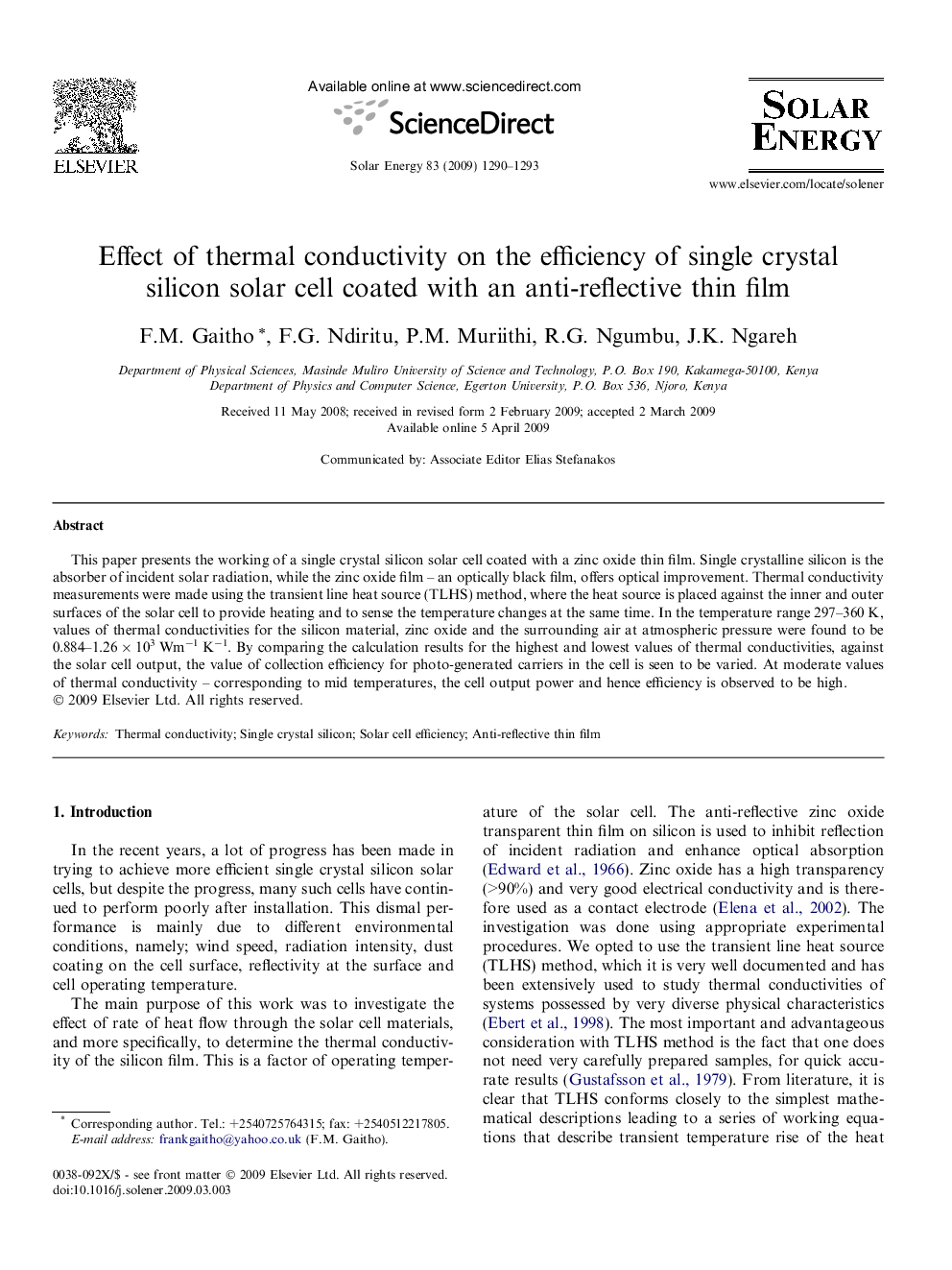| Article ID | Journal | Published Year | Pages | File Type |
|---|---|---|---|---|
| 1552044 | Solar Energy | 2009 | 4 Pages |
This paper presents the working of a single crystal silicon solar cell coated with a zinc oxide thin film. Single crystalline silicon is the absorber of incident solar radiation, while the zinc oxide film – an optically black film, offers optical improvement. Thermal conductivity measurements were made using the transient line heat source (TLHS) method, where the heat source is placed against the inner and outer surfaces of the solar cell to provide heating and to sense the temperature changes at the same time. In the temperature range 297–360 K, values of thermal conductivities for the silicon material, zinc oxide and the surrounding air at atmospheric pressure were found to be 0.884–1.26 × 103 Wm−1 K−1. By comparing the calculation results for the highest and lowest values of thermal conductivities, against the solar cell output, the value of collection efficiency for photo-generated carriers in the cell is seen to be varied. At moderate values of thermal conductivity – corresponding to mid temperatures, the cell output power and hence efficiency is observed to be high.
